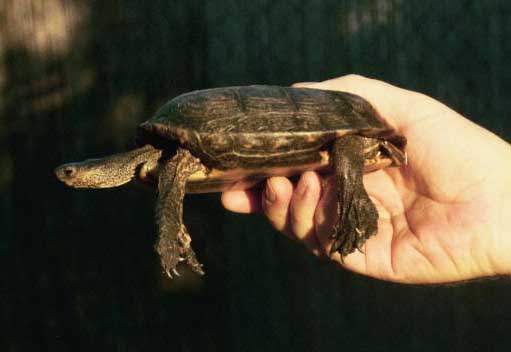Honduran Wood Turtle
Central American Wood Turtle, Guatemalan Wood Turtle, Mexican Wood Turtle, Painted Wood Turtle Scientific Name: Rhinoclemmys pulcherrima incisa
Mon, 28th April, 2025 - 9:23 am GMT
Sponsor Ads:

Alternative Name
Central American Wood Turtle, Guatemalan Wood Turtle, Mexican Wood Turtle, Painted Wood Turtle Scientific Name: Rhinoclemmys pulcherrima incisaBasic Info
Growing to lengths of about 8 inches (20 centimeters), Honduran Wood Turtles have reddish brown shells. Females tend to grow larger than males. A small raised line divides the carapace in half. The scutes are nicely sculpted. Honduran Wood Turtles have creamy to yellow plastrons that are decorated with darker lines, particularly by a very darkly colored column running the length of the shell. The skin over the head and legs of Honduran Wood Turtles is a brown color.
Health
Honduran Wood Turtles require a semi-aquatic habitat that is primarily terrestrial. Their enclosure should have high humidity. Though a filter can help with water circulation, Honduran Wood Turtles may quickly dirty their water because of their burrowing habits. A substrate of bark or soil that will allow them to burrow will generally be used extensively, but much of the substrate may end up in the water. Honduran Wood Turtles have been reported to make lots of use of basking areas. A diet based on fresh dark leafy green vegetables supplemented with insects should be offered. Snails are reported to be a special favorite. Fruit can be offered in small amounts. Breeding Breeding is relatively difficult. Females can become calcium deficient very easily. It has been reported that separate housing for the female and male, works best in breeding programs. The males and females should only be allowed to be together for short periods of time. The problem when they are left together is that they may try to mate too often, which can lead to over production of eggs and to the calcium deficiency as mentioned above.Habitat
Found on land, although they are never far from waterBehavior
The instant favorite of many people that have obtained them, Honduran Wood Turtles are pretty and fairly hardy. These animals are not too demanding and can be very rewarding pets when properly maintained. In the wild, Honduran Wood Turtles are often found on land, although they are never far from water. They will appreciate a captive environment with lots of hiding places and often burrow into loose substrates. Honduran Wood Turtles can swim, though they do not remain in water all the time. Many adjust quickly to captivity and can make rewarding pets. It has been reported that they not get along very well with other species of turtles especially the males, which can get aggressive.Origin
Central and South AmericaHistory
The Honduran Wood Turtle is often called the Mexican Wood Turtle. This can be confusing, for a different subspecies of this type of turtle is also known as the Mexican Wood Turtle. Honduran Wood Turtles are native to Central America and to parts of South America. They are also called Guatemalan Wood Turtles.Common Foods
N/ASponsor Ads:
Firestone's Law of Forecasting: Chicken Little only has to be right once.
Honduran Wood Turtle
Coded by: BGID® | ALL RIGHTS RESERVED Copyright © 2000-2025
Disclaimer | Privacy | Report Errors / Contact | Credits


 President of the United States of America - Real Estate mogul, Pageant owner and now one of the most controversial men in political history.
President of the United States of America - Real Estate mogul, Pageant owner and now one of the most controversial men in political history.  Politician, US Vice President and President of the USA - Joseph Robinette Biden Jr.
Politician, US Vice President and President of the USA - Joseph Robinette Biden Jr.  versus
versus  Russia: 'The Evil Empire'? Are they all that bad or is it just the USA trying to portray Russia as bad because they are a world power with land bigger and a society very different from the USA ideal?
Russia: 'The Evil Empire'? Are they all that bad or is it just the USA trying to portray Russia as bad because they are a world power with land bigger and a society very different from the USA ideal?  Global warming has been in and out as the "latest" hot topic for many years. It is, according to modern scientists, the result of man-made industrial pollutants, clearing forested areas, agriculture, etc. But now they are thinking it started way before the Industrial Revolution...
Global warming has been in and out as the "latest" hot topic for many years. It is, according to modern scientists, the result of man-made industrial pollutants, clearing forested areas, agriculture, etc. But now they are thinking it started way before the Industrial Revolution... 
 Corona virus
Corona virus 
 Users with wide screen monitors can benefit from more content on every page.
Users with wide screen monitors can benefit from more content on every page.